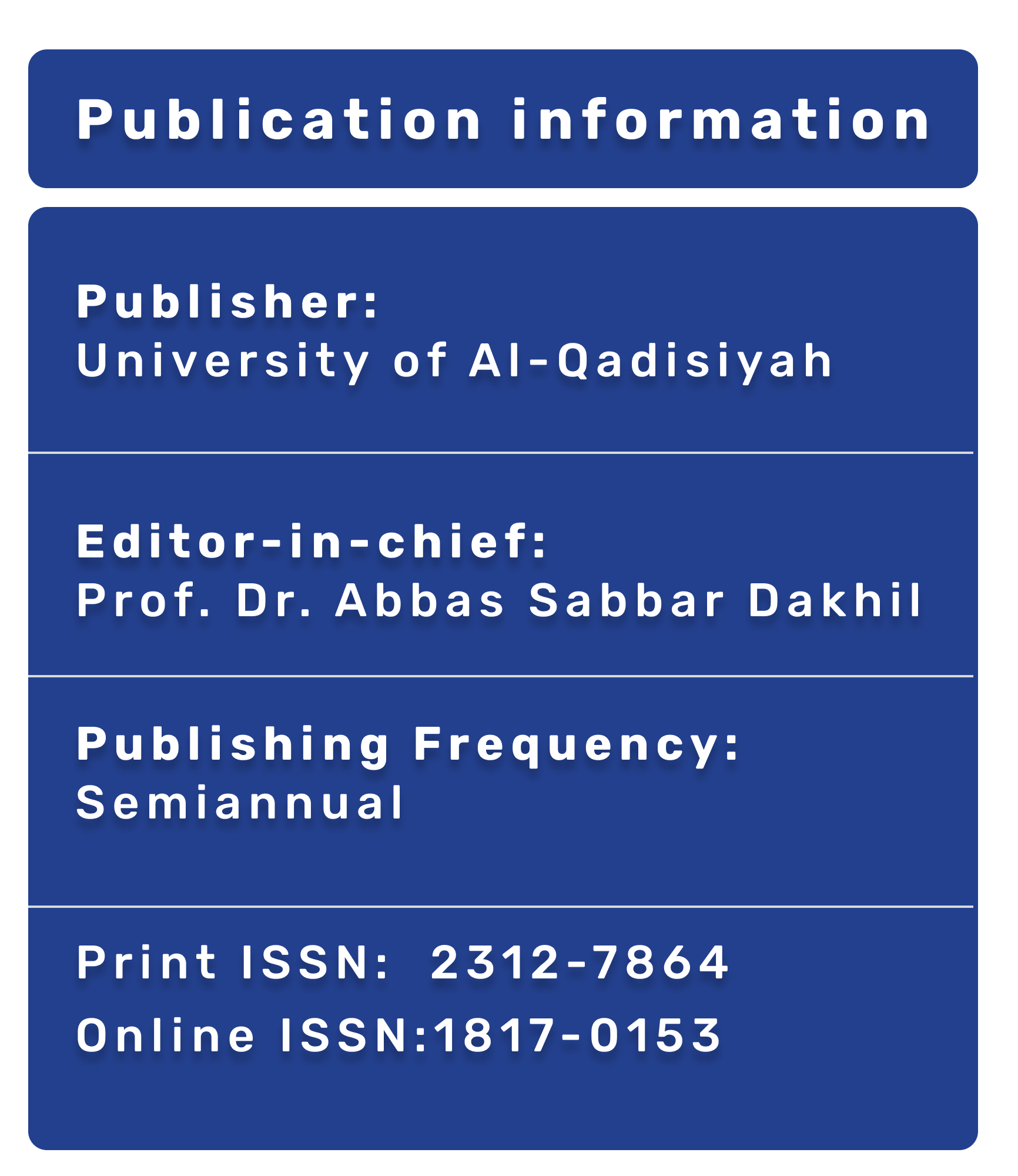Evaluation of serum levels Interferon gamma , Interleukin 10 and the ratio between them in patients with vitiligo
Association of Interferon gamma : Interleukin 10 cytokine ratio in vitiligo patients
DOI:
https://doi.org/10.28922/qmj.v20i1.943Keywords:
Vitiligo, Interleukin 10, Interferon gamma, RatioAbstract
Abstract
Background and Objective : In the process of depigmenting vitiligo, cytokines, which control immune response and inflammation, are essential. In this investigation, serum levels of interferon gamma (IFN-?) and interleukin 10 (IL-10) and their the ratio were compared in healthy people and those with vitiligo in Iraqi.
Materials and method : In order to conduct the study, samples from 60 patients were collected, while samples from 60 healthy participants (the control group) were pooled and measured using sandwich ELISA. Data on the patient's gender, family history, disease state, stress exposure, and males smoking habits are collected as part of the study.
Results : When compared to controls, vitiligo patients had higher amounts of IFN- ???? while lower levels of interleukin 10. IFN-? to IL-10 ratio varied substantially among patients as well as controls. Concerning physical the differences, disease stability, and male smokers, there have been substantial distinctions between both IFN- ???? concentrations and the IFN-? to IL-10 ratio. IFN -???? : IL -10 ratio was substantially correlated having a history of vitiligo in their family, but, not at each molecule's level.
Conclusion : It could be concluded that patients with vitiligo have an elevated IFN- ???? serum level. The levels of serum IL-10 was lower than in patients with vitiligo in comparison with healthy control. A possible solution of potential immunologic indicators for vitiligo is the ratio of serum levels of IFN-? to IL-10.
References
Referances :
Ala Y, Pasha MK, Rao RN, Komaravalli PL, Jahan P. Association of IFN-?: IL-10 cytokine ratio with nonsegmental vitiligo pathogenesis. Autoimmune Dis. 2015;2015.
Esmaeili B, Rezaee SAR, Layegh P, TAVAKKOL AJ, Dye P, GHAYOOR KE, et al. Expression of IL-17 and COX2 gene in peripheral blood leukocytes of vitiligo patients. 2011;
Nordlund JJ, Boissy RE, Hearing VJ, King RA, Oetting WS, Ortonne J-P. The pigmentary system: physiology and pathophysiology. John Wiley & Sons; 2008.
Rashighi M, Agarwal P, Richmond JM, Harris TH, Dresser K, Su M-W, et al. CXCL10 is critical for the progression and maintenance of depigmentation in a mouse model of vitiligo. Sci Transl Med. 2014;6(223):223ra23-223ra23.
Singh S, Singh U, Pandey SS. Serum concentration of IL-6, IL-2, TNF-?, and IFN? in vitiligo patients. Indian J Dermatol. 2012;57(1):12.
Moore KW, de Waal Malefyt R, Coffman RL, O’Garra A. Interleukin-10 and the interleukin-10 receptor. Annu Rev Immunol. 2001;19(1):683–765.
Abdel Mawla MYM, Khalifa NA, Khattab FM, Mohamed HKH. Evaluation of Serum Interferon Gamma in Patients with Vitiligo versus Control Group. Egypt J Hosp Med. 2022;88(1):3839–43.
Kurtovic NO, Halilovic EK. Serum concentrations of interferon gamma (IFN-?) in patients with psoriasis: correlation with clinical type and severity of the disease. Med Arch. 2018;72(6):410.
Chatterjee S, Eby JM, Al-Khami AA, Soloshchenko M, Kang H-K, Kaur N, et al. A quantitative increase in regulatory T cells controls development of vitiligo. J Invest Dermatol. 2014;134(5):1285–94.
Shi F, Erf GF. IFN-?, IL-21, and IL-10 co-expression in evolving autoimmune vitiligo lesions of Smyth line chickens. J Invest Dermatol. 2012;132(3):642–9.
Custurone P, Di Bartolomeo L, Irrera N, Borgia F, Altavilla D, Bitto A, et al. Role of cytokines in vitiligo: pathogenesis and possible targets for old and new treatments. Int J Mol Sci. 2021;22(21):11429.
AA AM, Tawfik YM, El-Mokhtar MA, Elkady S, El-Gazzar AF, ElSayed SK, et al. Cutaneous JAK Expression in Vitiligo. J Cutan Med Surg. 2020;25(2):157–62.
Islam H, Chamberlain TC, Mui AL, Little JP. Elevated interleukin-10 levels in COVID-19: potentiation of pro-inflammatory responses or impaired anti-inflammatory action? Front Immunol. 2021;12:677008.
Renauld J-C. Class II cytokine receptors and their ligands: key antiviral and inflammatory modulators. Nat Rev Immunol. 2003;3(8):667–76.
Dwivedi M, Laddha NC, Arora P, Marfatia YS, Begum R. Decreased regulatory T?cells and CD 4+/CD 8+ ratio correlate with disease onset and progression in patients with generalized vitiligo. Pigment Cell Melanoma Res. 2013;26(4):586–91.
Woo KS, Yip TWC, Chook P, Koon K V, Leong HC, Feng XH, et al. Vitamins B-12 and C supplementation improves arterial reactivity and structure in passive smokers: implication in prevention of smoking-related atherosclerosis. J Nutr Health Aging. 2021;25:248–54.








